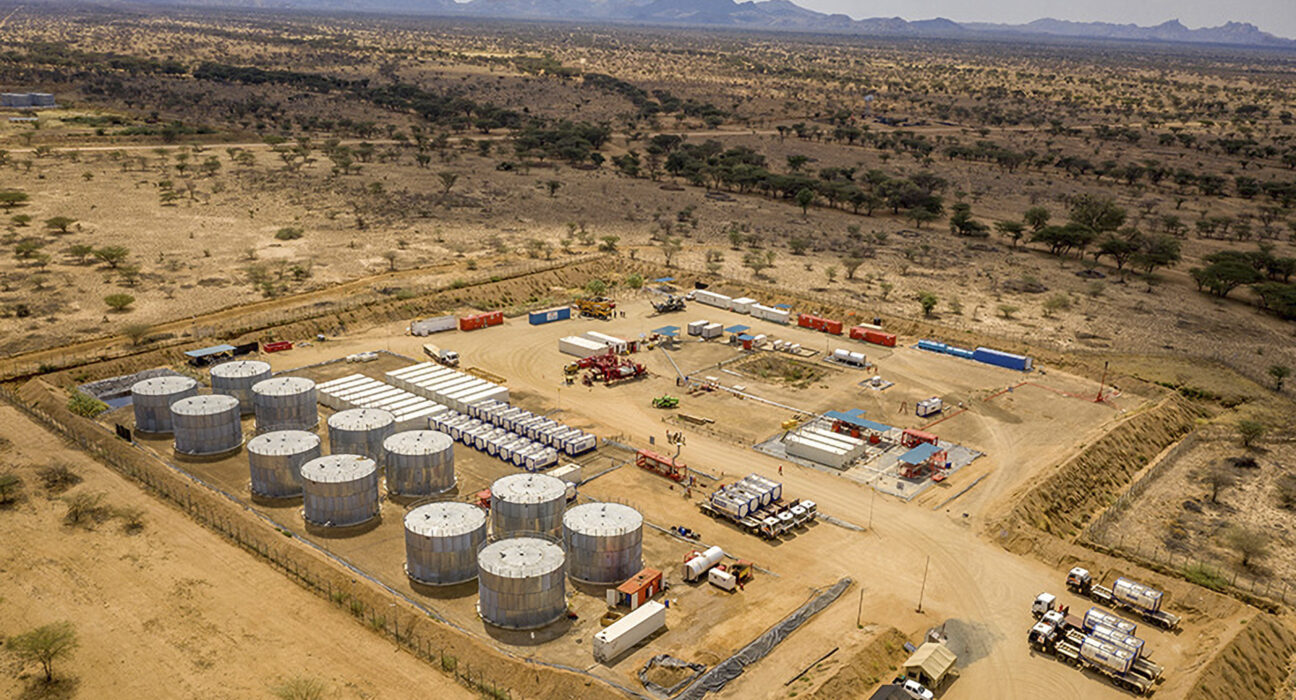Kenya has taken a major step toward becoming an oil-producing nation after the government approved the Field Development Plan for the South Lokichar Basin, formally transitioning the project from exploration into full commercial development. The plan, submitted under Blocks T6 and T7 in the Tertiary Rift Basin, lays the foundation for the first large-scale crude oil operations in the country, ending more than a decade of uncertainty around Kenya’s petroleum prospects.
The approved plan outlines a total investment of 6.1 billion dollars that will fund the drilling, processing and export infrastructure needed to extract and commercialise reserves discovered in Turkana County. The fields, licensed to Gulf Energy E&P BV, will be developed in phases, starting with a production capacity of 20,000 barrels per day from late 2026. Output is projected to rise steadily to 50,000 barrels per day by 2032 as additional wells are brought online and processing capacity scales up.
Government officials have described the approval as one of the most significant milestones for Kenya’s nascent upstream sector, representing the most advanced commercial petroleum development attempted in the country to date. The Field Development Plan follows years of appraisal drilling, early production testing and negotiations involving private operators and the Ministry of Energy. With the plan approved, the consortium can now begin detailed engineering, long-lead equipment procurement, and early construction works in preparation for first oil.
The project will develop six confirmed discoveries in the South Lokichar Basin. These fields have been considered commercially viable since early appraisal work demonstrated consistent reservoir characteristics and recoverable volumes. However, progress had stalled several times due to global oil price volatility, changing operator structures and infrastructure challenges, particularly the development of an evacuation route to international markets.
Energy sector analysts say the renewed momentum signals both investor confidence and government commitment to finally unlock the basin’s potential. The upcoming development phase is expected to include drilling of production wells, construction of central processing facilities, expansion of infield pipelines and deployment of water and power infrastructure to support round-the-clock operations. In parallel, work is expected to continue on Kenya’s crude export plans, which may involve road transport in the early years before a long-term pipeline solution is finalised.
Officials indicate that the timeline outlined by the operator sets December 2026 as the target for first oil. This will mark the moment Kenya joins the list of African nations producing crude at commercial scale. Full-field production, according to the plan, will stabilise around 2032 once all the discoveries are fully developed and processing facilities reach maximum efficiency.
For Turkana County, the decision carries major economic and social implications. Commercial oil projects typically trigger job creation, increased local procurement and infrastructure development in surrounding communities. The national government and the local county government are expected to work on frameworks that ensure revenue-sharing arrangements are implemented transparently and that local communities receive direct benefits in line with existing petroleum legislation.
Industry observers have highlighted that the 6.1 billion dollar investment is likely to position the oilfields as one of the most capital-intensive energy projects in Kenya’s history. It also arrives at a time when the country is seeking to diversify its export base, ease pressure on foreign exchange markets and strengthen its fiscal position. Should production scale as planned, crude oil exports have the potential to generate steady revenue streams that may support long-term economic stability.
Energy economists, however, note that global markets remain unpredictable, especially as many countries accelerate their transition toward renewable energy. For Kenya, moving decisively forward with the approved plan represents a balance between maximising existing fossil resource potential and managing future shifts in global energy demand. Proponents argue that timely development is critical, given that capital availability for oil projects is expected to tighten worldwide in the coming decade.
Gulf Energy E&P BV, the license holder, has outlined its technical approach to the project, emphasising that the development concept will integrate modern extraction techniques, phased drilling programmes and modular processing systems to manage costs while maintaining production efficiency. The operator also plans to introduce sustainability considerations into the field layout, incorporating water management systems, emissions tracking and responsible land use practices in collaboration with national regulators.
The Ministry of Energy has indicated that it will closely monitor the implementation phase to ensure that safety, environmental and community engagement standards are maintained. Regulatory frameworks under Kenya’s Petroleum Act require comprehensive environmental and social impact assessments, community consultations and compensation mechanisms before full-scale field work begins.
The approval of the Field Development Plan also revives discussions around export infrastructure. Long-term evacuation of South Lokichar crude has historically been linked to plans for a crude pipeline to the Kenyan coast. While the pipeline remains an active element of national strategic planning, the government is expected to consider a mixed approach in the early years that may involve trucking or interim logistical arrangements until a permanent pipeline is completed.
Stakeholders across the region have welcomed the decision, noting that Kenya now stands at the threshold of a new phase in its energy sector. With commercial oil development finally moving forward, the project is expected to attract additional investment into supporting industries including logistics, drilling services, engineering, camp construction, and environmental management services.
If the project meets its timelines, Kenya could begin earning meaningful export revenue by the latter half of this decade. By 2032, when peak production is expected, analysts estimate that the South Lokichar fields could significantly strengthen Kenya’s position as a regional energy player and diversify national income sources.
The approval marks the strongest signal yet that Kenya is ready to transition from prospecting to production. The coming months will determine how quickly the operator can mobilise resources and how effectively government agencies can manage regulatory oversight, community expectations and national economic interests.





